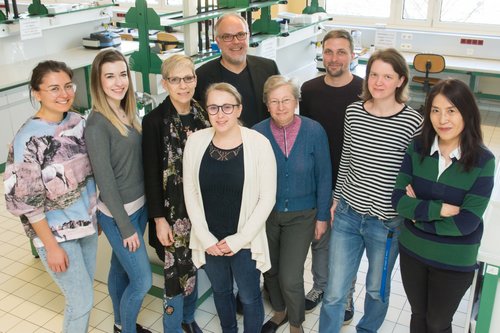- Medical Biochemistry /
- Research /
- Research Groups /
- Group Duvigneau
Pathophysiological stressors like inflammation, ischemia and oxidative damage are common features of many diseases. Our work group studies the response of animal tissues and body fluids, cells and subcellular structures to those stressors. We aim at describing and understanding the mechanisms underlying a deranged homeostasis, and at identifying factors leading to successful stress tolerance. Our special interest focuses on heme oxygenase and NO-synthase, two enzymes that produce biatomic gases, and their role in stress adaptation.
For analyzing pathways and key genes affected by pathophysiological stressors, we investigate the responses in cells and tissues at the transcriptional level by quantitative PCR. At a functional level, we use biochemical methods to analyze enzyme activities. Furthermore, we assess the viability and metabolic status of cultured cells using diverse live-cell stains and analyses of mitochondrial function (extracellular flux analyses). Proteomic profiling is performed by one- and two-dimensional gel electrophoresis using different staining methods (including fluorophores and DIGE), both on the qualitative and quantitative level. Zymography, and reactivity testing with specific antibodies are used to confirm findings, while the use of lectins can provide additional information about yet unidentified proteins. The range of applications spans from the analysis of tissue secretomes and lysates to investigations of the composition of biological glues.
Head of Research Group Stress Response in Disease
Dr.rer.nat. Dipl.-Biol. Catharina Duvigneau
T
+43 1 25077-4208
E-Mail
to vCard
Staff Research Group Stress Response in Disease
Dr.-Ing. Ingrid Miller
T
+43 1 25077-4224
E-Mail
to vCard

Andrea Müllebner, PhD.
T
+43 1 25077-4208
E-Mail
to vCard
